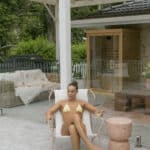ARCHITECTURE
NSW Country Division Architecture Awards
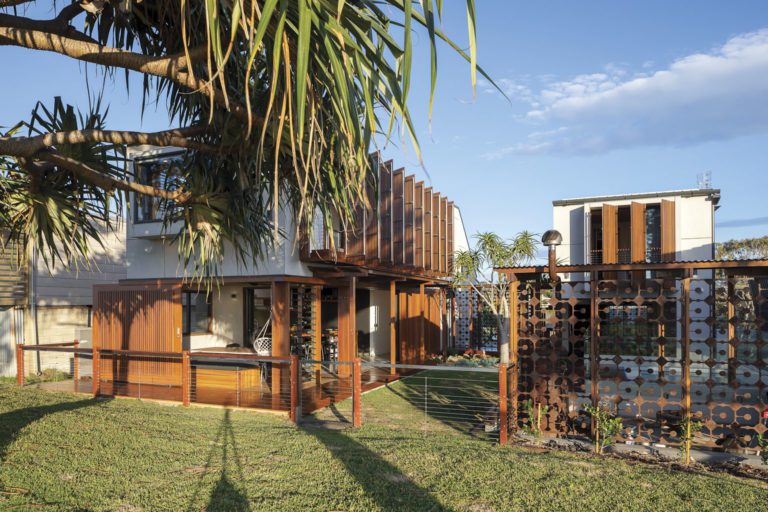
WORDS: PHOTOGRAPHY Photography: Andy Macpherson & ‘Fatfish Photography’ @fatfishphoto
The NSW Country Division Architecture Awards celebrate the work of architects working in regional NSW. Since its inception in 1960, the NSW Country Division has provided continuous representation and service to NSW regional architects of the Australian Institute of Architects outside the metropolitan areas of Sydney and Newcastle. The annual Awards program has grown in prestige over many years, recognised as a forum to showcase regional architecture at its best. The program not only celebrates the high level of design excellence in country NSW, but also celebrates the achievements of our Country Division members practicing architecture, often in remote regional locations. There were 32 eligible projects of which 6 were individual houses. All 6 entries in this division were from northern NSW based architects. Aspect Architecture won the top award for housing in regional NSW.
Elanora House – Pottsville – Winner NSW Country Division of the Australian Institute of Architects – Housing in regional NSW
The site for the Elanora House sits just behind the sand dunes of Pottsville Beach in northern New South Wales. The vacant site has for many years provided a green visual link to the dunes and beach beyond from the established residential neighbourhood of Pottsville Beach. A key driver in the design of the Elanora House was to preserve this green link between the beach and the urban areas.
Our client’s programme was to provide a place which in the short term could be used as a holiday house and in the longer term once the children had left home would become their permanent residence. Both elements of the programme therefore required a solution allowing comfortable living for just two, or the considered and easy occupation for extended family or friends of up to as many as 20 additional people.
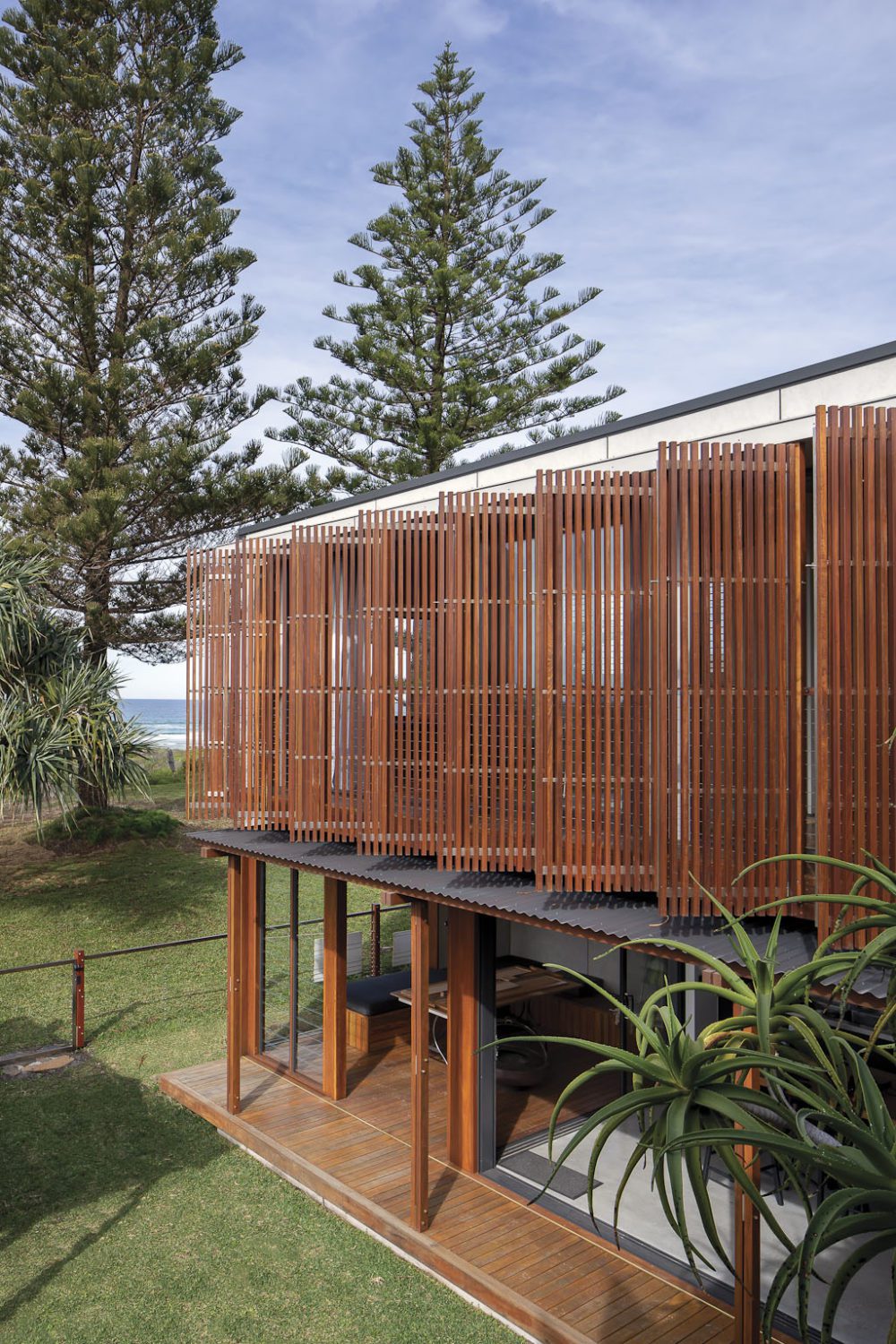
‘Fatfish Photography’ @fatfishphoto
The solution was to split the programme and building mass into two staggered pavilions. This allows a clear visual continuation of the green dunal vegetation and high Norfolk pines through the site, between the buildings and into the suburbs. Additional key planting was added in this gorge between the building masses to reinforce this green link and provide a softer more open façade to the street.
Another key consideration given the highly exposed location was for protection from the elements. The staggering of the pavilions – the south pavilion is pushed to the eastern frontage of the site, and the north pavilion is pushed to the west – along with the creation of a careful ground floor plane actually sited below the existing dune height, creates a north east facing yard and pool space protected from the strong southerlies but open to the cooling summer northerly winds, and a western yard which both addresses the street and provides a buffer for the building to the street. The winter sun soaked northern yard flows onto and takes a quasi common possession of the public dunal zone. This space then becomes a vibrant social space for the various homes fronting this area and is used for sunset drinks, cricket matches and general social interaction.
The south pavilion is considered the ‘house’. The primary living and entertaining spaces along with the master suite and study occupy this side of the project. The spaces are compact yet flow seamlessly into the north eastern yard. The northern pavilion allows expansion for family and friends with a series of bunk style bedrooms and a second common living space, with the entire pavilion easily shut down.
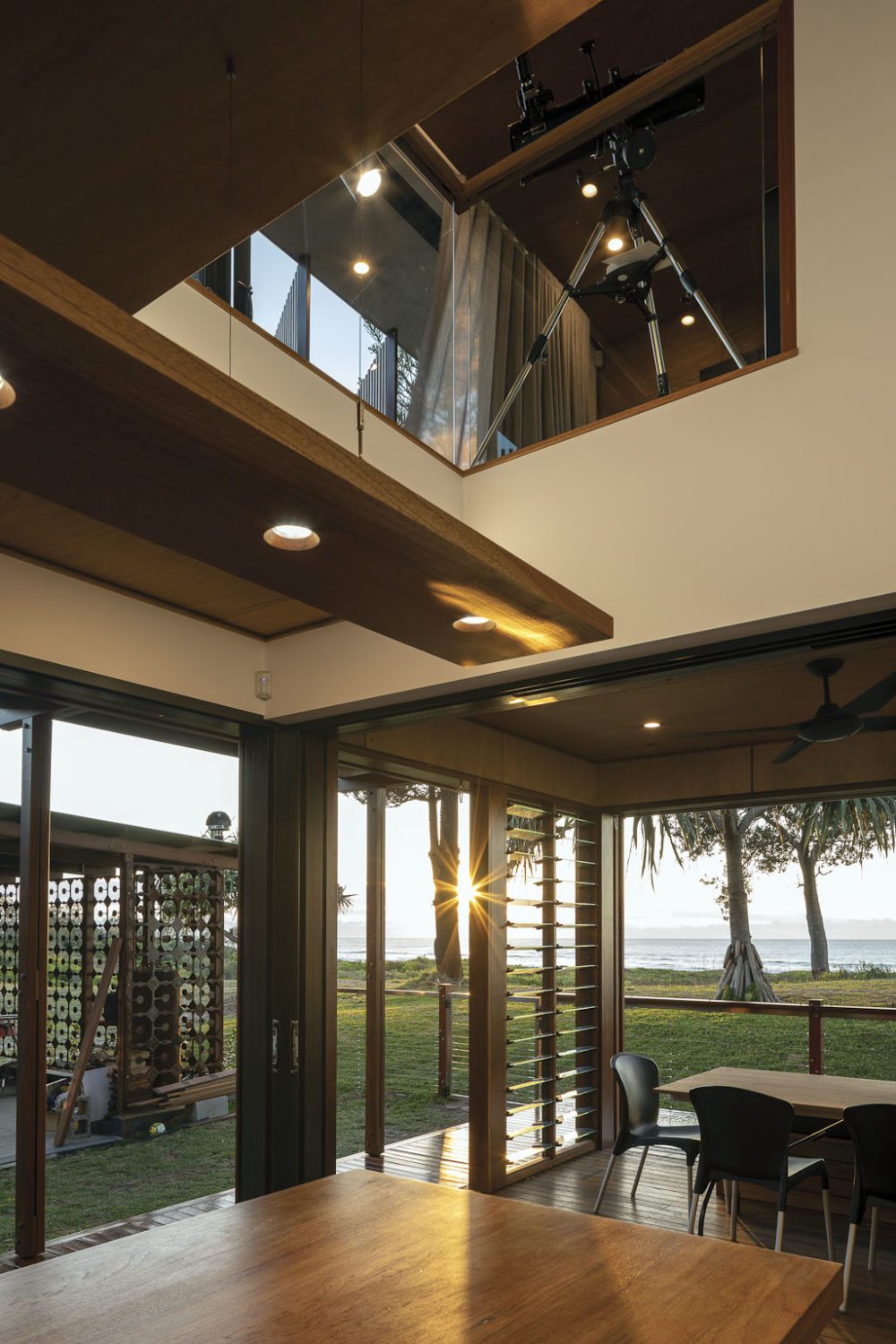
‘Fatfish Photography’ @fatfishphoto
The key secondary consultant in the project was the landscape designer. He was part of the initial conceptual discussion about the breakdown of the site and creation of the green ribbon through the site.
The use of simple rectilinear forms with single short span structural elements allowed a high cost efficiency of the base structure. Budget was then available for detailed elements such as the operable timber screening on select portions of the building.
The Marvell Street Studio
Project Description
Marvell Street Studio is an additional chapter to Harley Graham Architect’s exploration into the ‘Garden Studio’ typology. This ongoing discourse expands on ways to address the need for increased urban density by re-imagining the quarter acre block. Whilst the desire for the ‘house and garden’ typology is a part of the quintessential Australian suburban dream, the reality of escalating house prices, aging populations and household diversity requires architects to address the various forms of urban excess.
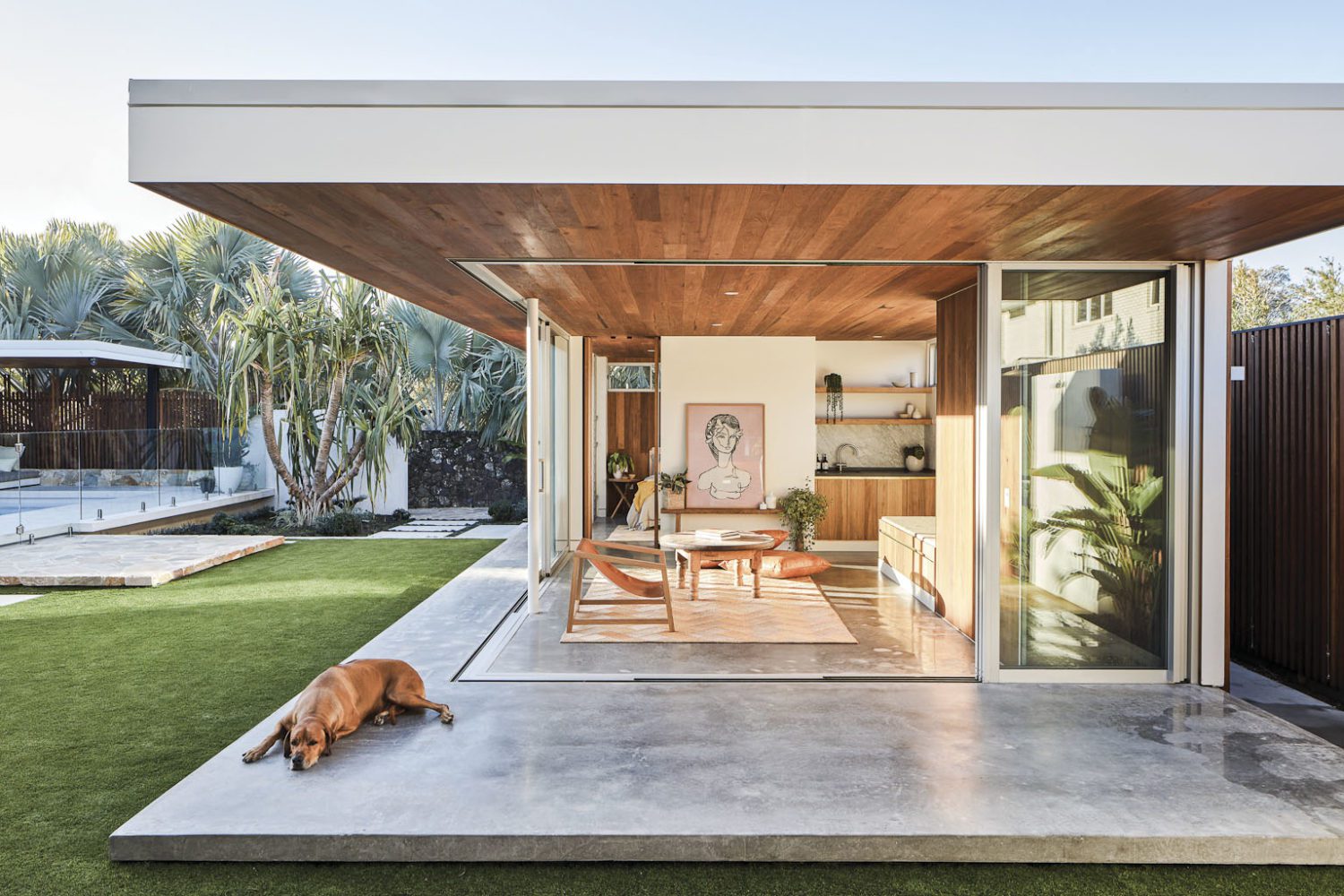
Photography: Andy Macpherson
Marvell studio, a granny flat for the client’s parents and friends, addresses the left over space in the garden by providing an auxiliary space to the lawn enabling a seamless connection between external areas in the existing home, lawns and the garden areas by maintaining a mutable threshold with a wide open corner. The studio provides amenity to these areas by providing an externally accessible toilet, outdoor shower, basin and storage in addition to being an ‘operable pergola’ itself.
In contrast to this flexibility, the bedroom uses a concealable door to partition off a private realm as a bedroom and ensuite. The Studio’s form adopts a mid-century influence to complement the existing Paul Uhlmann designed dwelling, and is shaped to function effectively in a subtropical climate. An additional element to the Studio was a small pool cabana space that ties the architectural elements of the backyard together. Wrapped in tallow wood on a floating concrete slab, the studio additionally regulates through optimized awnings, and uses cross ventilation to mitigate the use of air-conditioning.
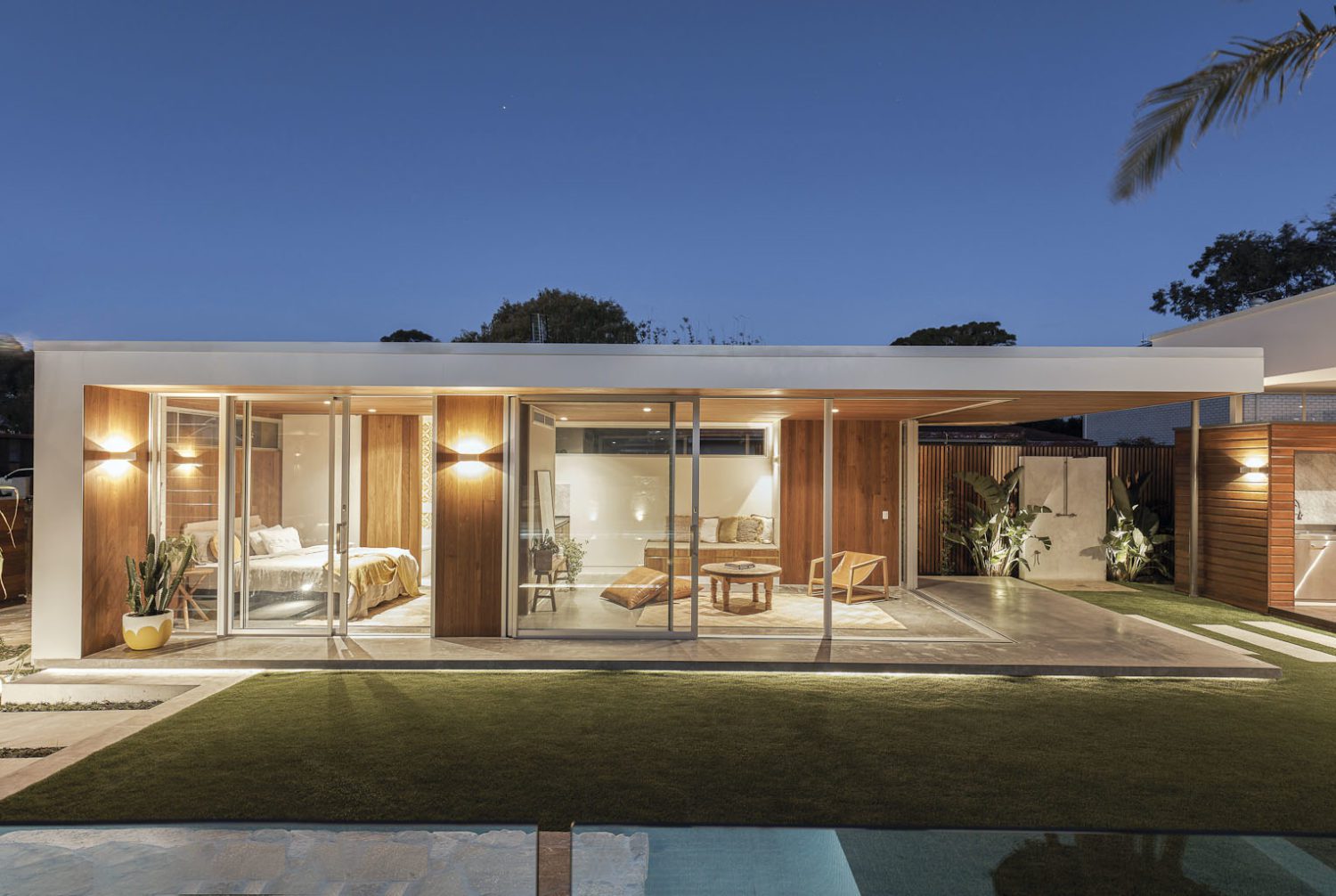
Photography: Andy Macpherson
Self-contained, yet encouraging inter-spatial conversation, the studio is a socially shared compromise that fits within the Australian lifestyle. Marvell Studio seeks to provide an approachable solution to suburban densification which appeals to the demographic that is unwilling to sacrifice a vision of the Australian quarter-acre-block. This large demographic represents one of the main contributors of sprawl and therefore is necessary to find solutions which may sway collective opinion through key changes in the design approach. Whilst essentially a common granny flat – the Studio’s programme is divided between a pergola, an outdoor refuge and an entirely self contained separate dwelling.
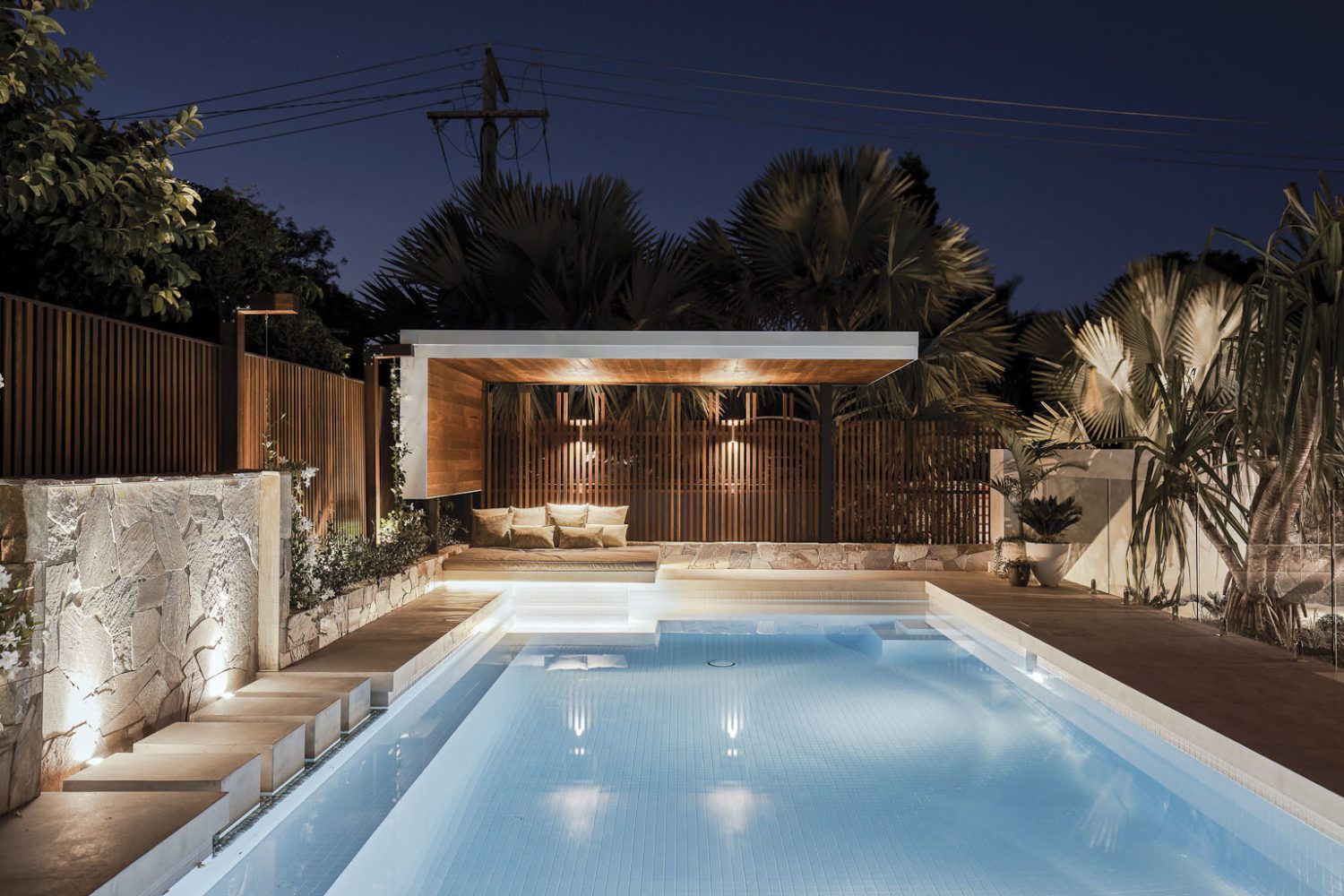
Photography: Andy Macpherson
The Garden Studio provides the opportunity to inspire and influence an increased public utilization of the backyard studio typology – creating sustainably interwoven suburban communities with increased outdoor amenity through operability,
and an improved sense of connection within and between singular lots.
The Eclipse House
Conceptual Framework:
Jeff and Fleur Anning’s brief was not so much about a perceived building but more about facilitating a transition from a hectic Gold Coast lifestyle dominated by the pressures of work to a casual one that would put family first. They asked us to help ‘unpack and simplify their lives’. We felt that the building should reflect those sentiments and what developed was a simple open plan prioritising coherent living, sleeping and working spaces wrapped in a palette of robust organic materials of concrete, stone and wood chosen to withstand the rigours of the harsh beachside environment while weathering and ageing gracefully.
Relationship of Built Form to Context:
The site presented three frontages; street to the west, beach to the east and a public foreshore access path to the south. The western façade, if shaded appropriately presented distant views to Mt Warning. Overcoming inherent privacy concerns we could create a strong connection to the beach foreshore. Seizing an opportunity to use the public access path as an entry point we could create a central circulation zone that could anchor the home.
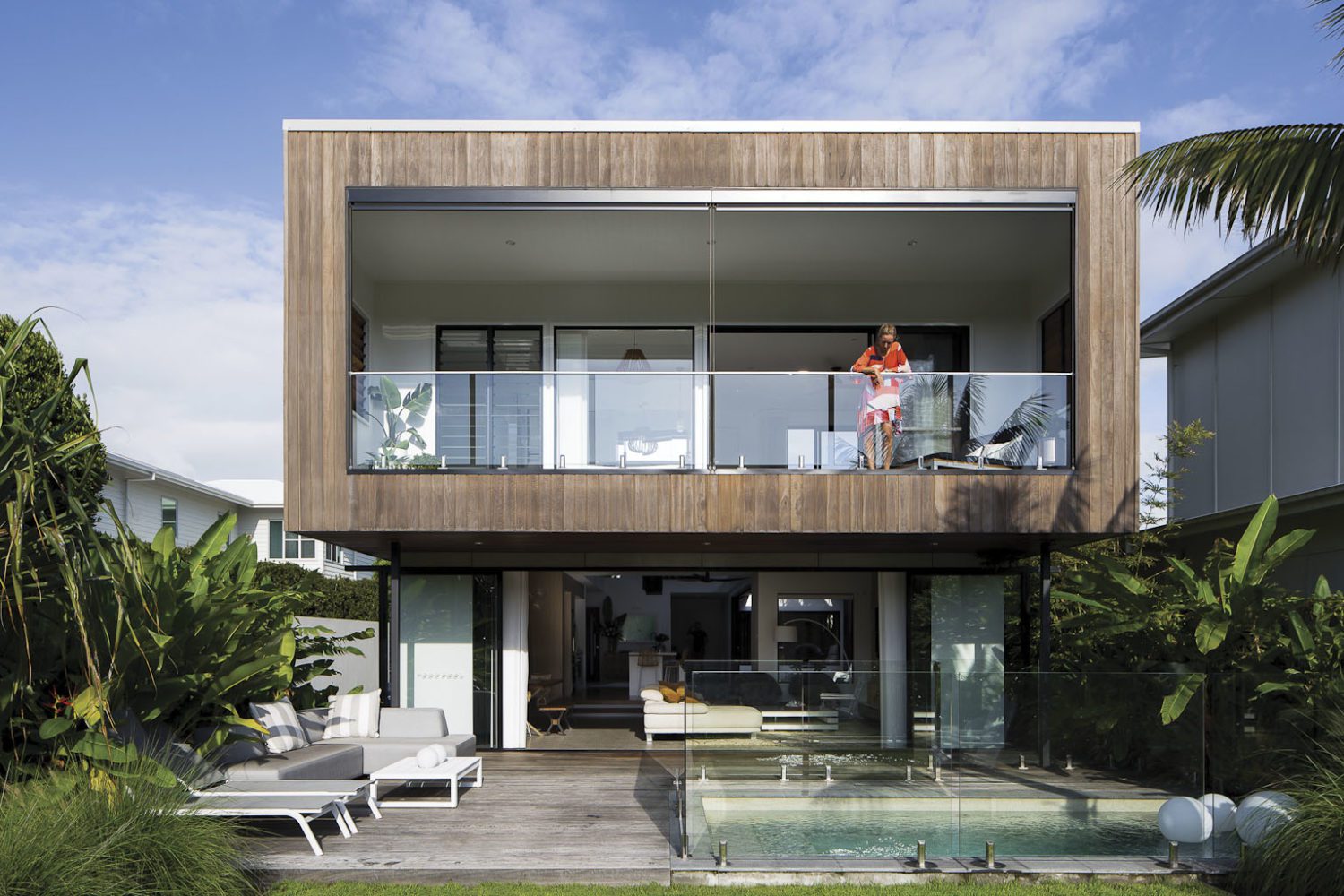
Photography: Andy Macpherson
Inserted into an established beachside vernacular that favoured an eclectic mix of shapes and materials, the Eclipse House developed a simple form of two timber boxes addressing the east and west facades and split in the middle to create an easily identifiable entry point on the south.
Program Resolution:
Planning reflects the challenges of the long narrow site, prioritising natural light and ventilation. Key to the plan is a double height volume and courtyard providing relief from the neighbouring home and allowing light and air to penetrate deep into the house.
Integration of Allied Disciplines:
The structural engineer, builder, tradespeople and suppliers are a collaboration developed over the past 15 years, so integrating the design, structure, fixtures and finishes was seamless.
Cost/value Outcome:
If a project were measured purely on its contract price, this one would have to be considered excellent value being delivered under $2,000.00 per square metre. However, the true value of The Eclipse House is better measured by the quality of life now facilitated.
Response to Client and User needs:
Fleur was adamant that the Kitchen should occupy the central void space creating a point from which lifestyle could pivot. Standing at the island bench looking east there are unhindered views through the living area to the pool, external decks, back yard and the foreshore. To the north and west you are connected to courtyard, multi-purpose room and study while looking up Fleur can see the Master Bedroom on one side and chat to her daughter in her bedroom through a louvered wall on the other.
Sustainability:
The central void is key to the homes passive solar design principals. Beachside breezes are drawn across the pool, under shaded decks, through northern openings and out through high automated awnings in the void cooling the entire home.
Operable screens on the east and west moderate heat gain and privacy while all rooms enjoy northern light, shaded in summer and welcomed in winter to heat concrete floors. The culmination being a flexible home that maintains ambient comfortable temperatures year-round.
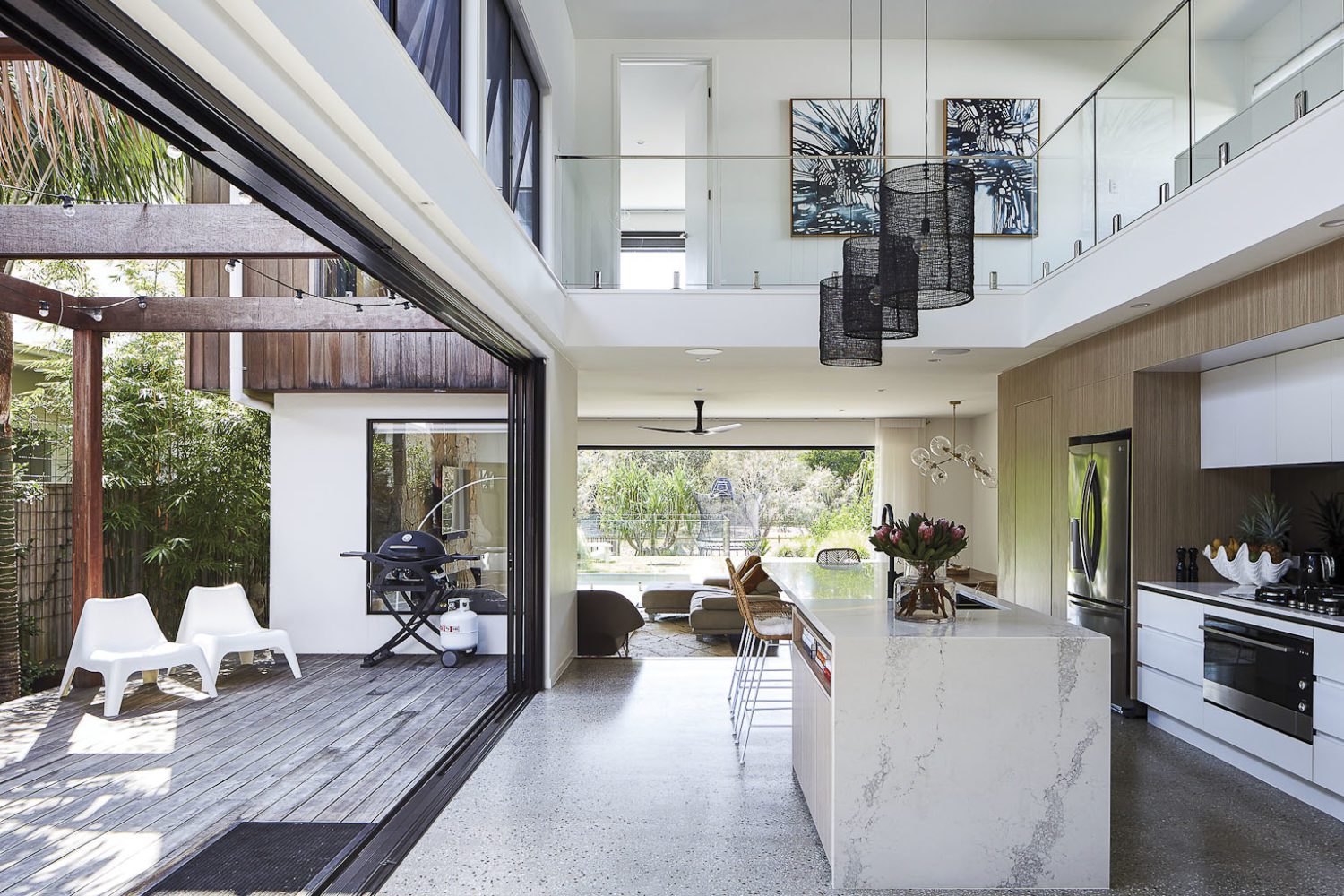
Photography: Andy Macpherson
Summary:
Inserted into an established beachside vernacular that favoured an eclectic mix of shapes and materials, the Eclipse House developed a simple form of two timber boxes addressing the east and west facades and split in the middle to create an easily identifiable entry point on the south.
Jeff and Fleur Anning’s brief was not so much about a perceived building but more about facilitating a transition from a hectic Gold Coast lifestyle dominated by the pressures of work to a casual one that would put family first. They asked us to help ‘unpack and simplify their lives’. We felt that the building should reflect those sentiments and what developed was a simple open plan prioritising coherent living, sleeping and working spaces wrapped in a palette of robust organic materials of concrete, stone and wood chosen to withstand the rigours of the harsh beachside environment while weathering and ageing gracefully.
Residential Architecture – Houses (New)
Winner – Elanora House, Pottsville, by Aspect Architecture
Commendation – Great Granny House, Coopers Shoot, by Cocks Carmichael with Harley Graham Architects
Commendation – Natural Lane House, Broken Head, by Dominic Finlay Jones Architects
Commendation – The Eclipse House, Casuarina Beach, by Create Architecture






